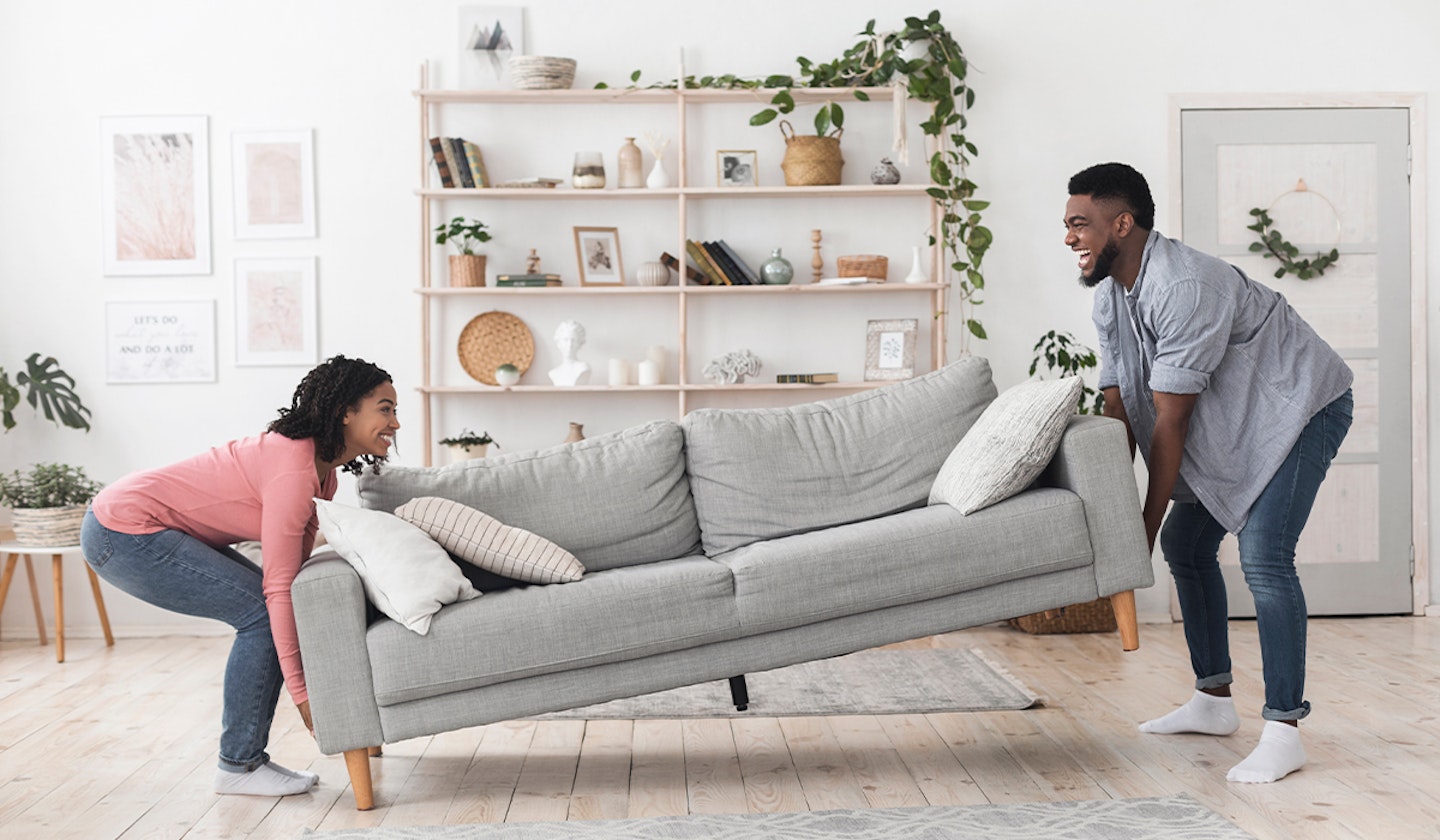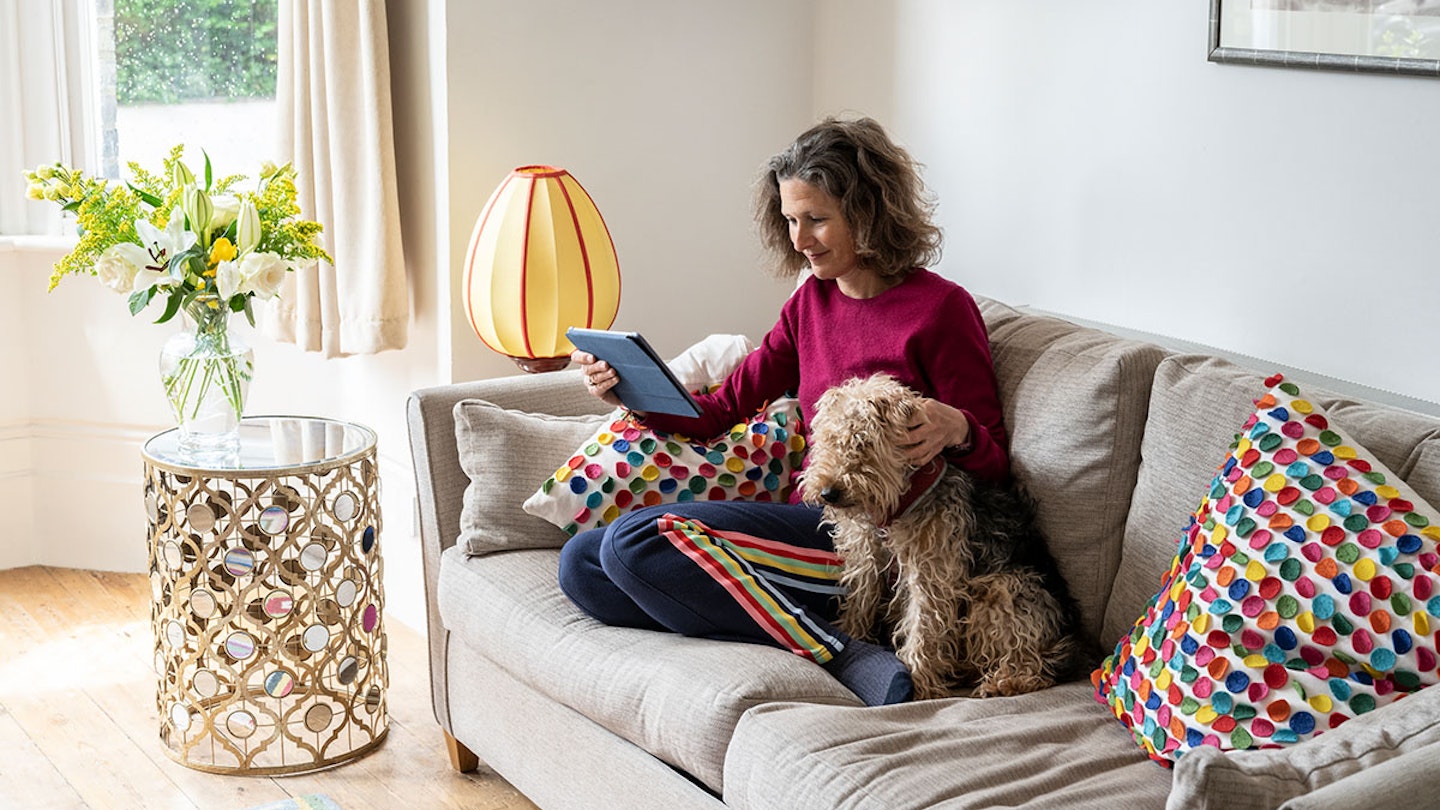Feng Shui is more than simply rearranging pieces of furniture in your room. In fact, Feng Shui has origins in ancient Chinese principles of balance and environmental harmony. Knowing how to Feng Shui your living room can be difficult, but it's all about creating a space in which you can exist peacefully with your surroundings. This approach helps you create a living space with positive energy within your home that you truly enjoy living in.
Applying Feng Shui to your living room design can bring openness, good luck, and light into your home. Living rooms have always been an integral and important part of any home – be it a flat or a house – and that’s because the living room is the main area in your home where most of the social and family gatherings happen.
Furthermore, your living room is where you spend most of your leisure time with your family, doing activities such as chatting, watching TV or discussions and much more.
Sarah Stone on How to Feng Shui your living room
Luckily, knowing how to Feng Shui your living room doesn't have to be challenging. We spoke to Creative Feng Shui founder and intentional living expert Sarah Stone to help you transform your living room into an area that can maximise your wellbeing - all without breaking the bank or taking too much time out of your day.
1) Minimise Clutter
The central principle of Feng Shui lies in spatial harmony. Space is harmonious when everything within it has a purpose and exists comfortably with other objects. Thus, the first step of achieving living room Feng Shui is to declutter the space itself.

Cluttered space can automatically influence your mental health, and not always in positive ways. It can also disrupt your living room flow. Feng Shui is also all about the power of chi, or life force, and its constant motion in and out of the spaces we inhabit. A messy or disorganised living room can automatically inhibit this flow.
Begin by decluttering your room and investing in smart storage space by removing anything from your living room that is causing clutter. This could mean excess furniture, clothing items, boxes, or even wall decor. Move these items to another room in your home or donate them. Make sure you can move easily in your living room without tripping over things or having to reach for items. This is a good litmus test for achieving a decluttered space.
2) Create Balance
The whole purpose of Feng Shui is to create balance, so make sure there isn’t a single overpowering material in the room. It’s important to offset textures. For example, if there is a lot of metal in your space, maybe add soft accessories like pillows and rugs. If you have a lot of whites and pastels, add pops of colours, potted plants, or wood to warm it up. Just be sure to make sure you're keeping everything clean with a good upholstery cleaner that won't ruin your accessories.
3) Invest in indoor plants
Many indoor plants are Feng Shui plants that bring wealth, luck, and prosperity to homes. Plants can be arranged so that there is a cascade of green throughout the living room. This natural cascade can help improve the air quality of the living room.

Just keep in mind that when you invest in plants and indoor succulents, you should also take care of them properly. Ensure that there is sufficient natural light and remember to water your plants at least once a week, which is the average watering period for indoor plants. You should avoid spiky plants to avoid sharp conversations.
4) Honour the Feng Shui Elements
The living room is a melting pot of different elements. The key to good Feng Shui is to have a sample from all the five elements. The five factors include metal, wood, fire, water, and earth. This also applies when you Feng Shui your bedroom. Brown tones represent the earth element, as well as square and flat objects. Metallic colours include grey and white represent the metal element. Round objects represent metal. Wavy objects, as well as curved lines, are perfect for resenting the water element. For wood, you can use green and blue, as well as columnar objects and furniture. And finally, use triangular objects to represent fire. Red may be used to describe this area.
5) Consider the lighting in your room
Feelings of ease or balance often recall sensations of lightness. Feng Shui is all about navigating your environment with ease and grace. As a result, you can achieve living room Feng by creating a space filled with light. This may mean incorporating large windows, opening your curtains wide or installing gauzy rather than opaque curtains. Pale coloured or white walls can also give a living room a sense of lightness, as can lightly-coloured hardwood or tiled floors.
6) Add some art

You can use art to improve the Feng Shui of your living room. Just keep in mind that creativity is representative of the five elements, and it must not cause an excess or imbalance in the space. Use art to harmonise the details and bring happiness and positivity into your living room.
Also remember that the art displayed can also evoke the desired feelings you wish to create therefore you can also use photographs, paintings, and posters that have pleasant landscapes or smiling faces.
Another option is to hang a mirror opposite a window to reflect the landscape outside your home.
7) Change the arrangement of the furniture
A living room with good Feng Shui should have a seat and space for each family member. These independent spaces should be aesthetically pleasing and should be comfortable for the person using the area. If there are three family members, make sure that the seating available is sufficient for at least three people such as a large sofa and comfy living room armchair. Good Feng Shui also dictates that furniture should be arranged so that they invite conversations and happiness to flow from each member of the family. While we're huge fans of upcycling furniture, if you do want to get rid of your old furniture and invest in new, there are many brilliant charities who will collect furniture from your home.
8) Move your sofa around

The position of the sofa is one of the most important points to consider in terms of your furniture. You should position the sofa against a solid wall, although it doesn’t need to touch. It is also important that the sofa is facing the main door in the living room. If there is nowhere that you can put the sofa so that you can see the door, then use mirrors to reflect the door.
To enjoy more regular stories just like this, become a Yours subscriber and become part of our fun and friendly community of like-minded readers.
Lorna White is a Senior Digital Writer at Yours.co.uk. She was previously a writer at Yours Magazine writing features and news stories before joining the digital team. Lorna loves the great British countryside and likes to spend her spare time out and about in her home of Nottinghamshire walking her dog, Pippin.

